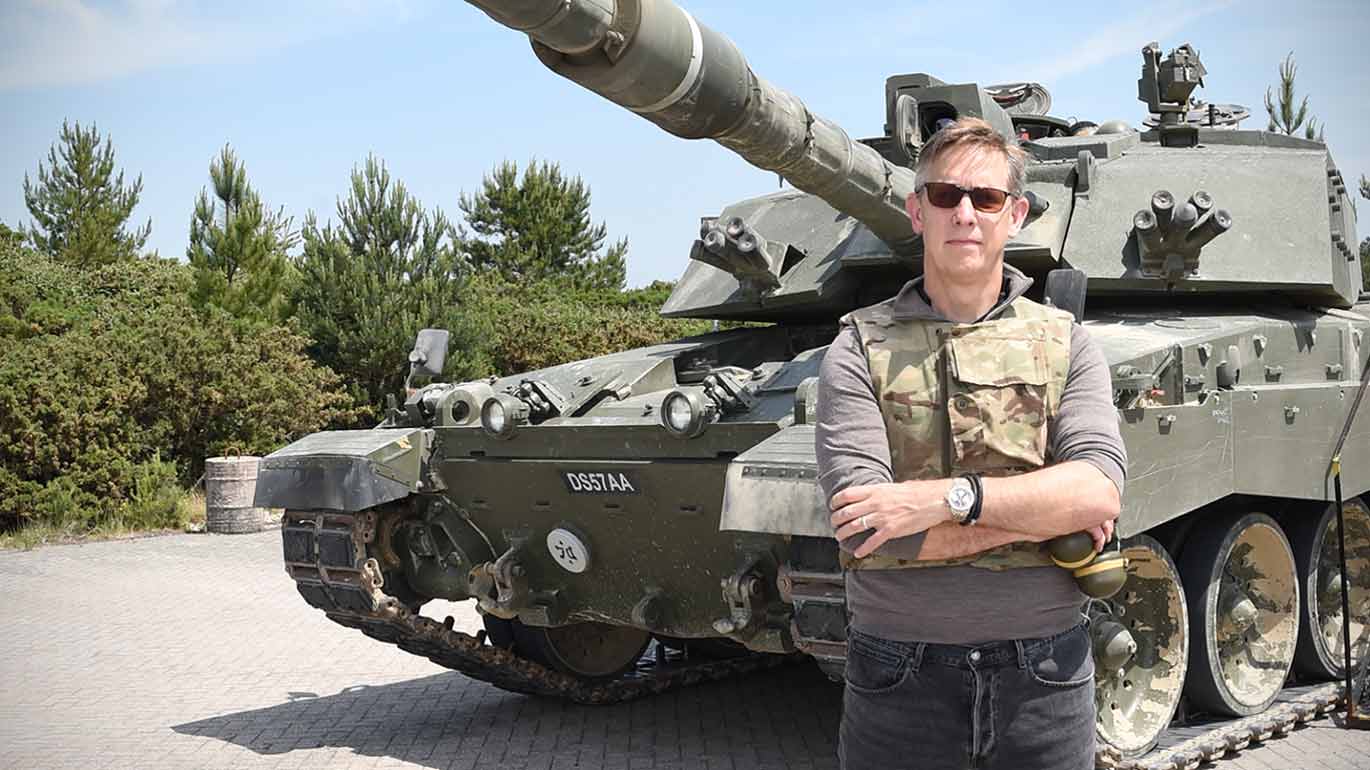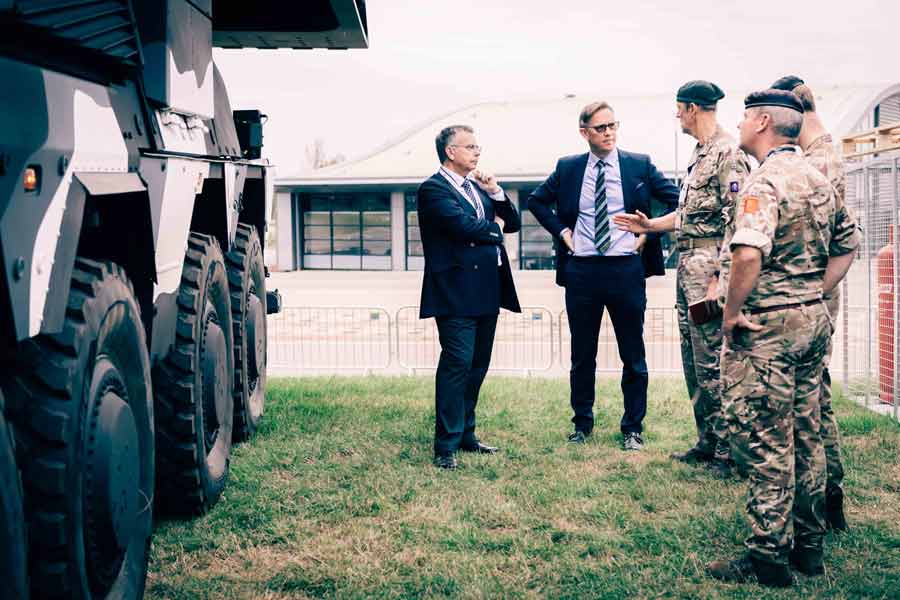DE&S CEO Interview Andy Start: UK defence procurement is making good progress
Despite UK defence procurement being described as 'broken,' DE&S CEO Andy Start says most programmes are executed well.
Anita Hawser
22 September 2023

Andy Start has spent the last 20 years helping organisations in the defence and space sectors transform and grow. But transforming the UK’s Defence Equipment & Support (DE&S), the organisation charged with equipping and supporting the UK’s Armed Forces could be his most challenging achievement, to date.
UK defence procurement has copped a lot of flak in recent years with reports from the National Audit Office and the House of Commons Defence Committee, depicting a system that is “overly bureaucratic, ponderous, an inconsistent approach to safety, and adverse to taking individual responsibility.”
But Start, who celebrates his one-year anniversary as CEO of DE&S in September, isn’t daunted by the criticism that continues to be levelled at the organisation he now leads. Against the backdrop of an increasingly innovative and assertive China, multiple autocratic states asserting themselves on the world stage, and the dramatic pace of change in technology, he understands the need to drive up the responsiveness and availability of the equipment that DE&S provides.
The House of Commons Defence Committee’s (HCDC) report, It is broke — and it’s time to fix it: The UK’s defence procurement system describes “multiple troubled programmes across the MoD’s portfolio,” including the Ajax armoured fighting vehicle, the scrapping of the Warrior Capability Sustainability Programme after10 years and £430 million was spent, delays to the Type 26 GCS’ IOC at a cost of £233 million, and spiralling costs associated with the Type 31 frigate programme.
In June, at the RUSI Land Warfare conference, Gen. Sir Patrick Sanders said we’ve got to accept that our procurement record has been poor, and we’ve allowed our land industrial base to wither.
But Start doesn’t recognise depictions of defence procurement in the UK as being ‘broken’. He says his own data suggests that defence procurement in the UK is improving year on year. “At any one time, our organisation manages about 2,600 contracts and 550 programmes, and of those, the vast majority execute. We deliver 98% of the key user requirements and 89% of our contractual milestones to plan. We have saved £6.2 billion out of the Equipment Plan since 2017. So, most programmes are executed well and indeed the level of overspending to budget is around 4%. So, it's only a very small proportion of programmes that are problematic.”
He points to the £2.3 billion worth of equipment the UK sent to Ukraine in 2022 and the speed with which it was able to deliver it. “We got our first orders out to Ukraine in 48 hours. Because we already have a network of innovation inside UK defence and close relationships with both the primes and small and medium enterprises, we've been able to bring technology through into the Ukraine conflict at an incredible pace. Within DE&S we have a team called the Future Capabilities Group, which has been doing things like injecting a lot of the drone technologies that you see in Ukraine and elsewhere and we’re doing the same in the UK context. In defence, we often talk about the big things that are problematic, but we don't talk about the vast scale of things that we do that go well.”
DE&S can and must do better
Other successes he highlights include the acquisition of the Archer 155 as an interim replacement for the 32 AS90 artillery systems the UK gifted to Ukraine’s Armed Forces. “We concluded the contract for the Archer in just eight weeks. We’re also accelerating ocean surveillance technology by repurposing a commercial surveillance ship as we recognise the increasing threat posed to oil and gas pipelines and underwater sea cables.”
Under his predecessors Sir Bernard Gray, Tony Douglas, and Sir Simon Bollom, Start insists defence acquisition in the UK has been progressing in the right direction for the last decade. “At the top end, we’re doing big, complex, mega projects which are historically, in every sector, difficult, because we’re pushing the boundaries. It is true to say we can and must do better. But it’s not true to say the UK is in any worse position than anyone else.”
Responding to criticism from General Sir Patrick Sanders who stated at this year’s RUSI Land Warfare Conference that the UK’s “procurement record has been poor, and we’ve allowed our land industrial base to wither,” Start says DE&S is getting on with executing the UK’s Land Industrial Strategy, starting with Ajax, which he says has turned a corner, with the delivery of 44 Capability Drop 1 vehicles delivered to Field Army and more than 14,000 collective kilometres racked up during Reliability Growth Trials this year.
With respect to the Boxer armoured vehicle programme, Start says state-of-the-art factories in Telford have been set up by RBSL to build the vehicles. “The first Boxers were delivered to the Millbrook Proving Ground a month ago. It is a phenomenal capability. Challenger 3 is progressing on track, and to augment that the Apache AH-64E, the British Army's new attack helicopter, is being rolled out with all 50 aircraft forecast to be delivered by the end of 2024. Project TIQUILA will also give the Army a new drone surveillance capability.”
During the Afghanistan and Iraq wars, Starts says the focus was on Urgent Operational Requirements, which meant critical UK defence capability was lost, which it is now in the process of rebuilding. “We needed to make a material difference here and invest in the UK supply chain.”
DE&S is also embracing what Start describes as the most substantial change in its operating model for a decade. Working with both industry and laterally across defence, a new strategy has been developed for DE&S, which Start says can be summarised in three words: ‘today, tomorrow, together’.

"Today, we must drive up the responsiveness and the availability of the equipment that we provide. Tomorrow, we need to spin in technology much more quickly, on top of those existing platforms, to enhance the capability and scale of deterrence that we deliver into the world, as well as delivering the long-term programmes that take years or decades. And we've got to do that better together with industry, which is a fundamental part of the defence ecosystem.”
To align with that strategy, Start says DE&S is changing the way it uses different technologies, as well as applying a lot of lean techniques to accelerate speed. “Based on my background of having done nine significant transformations in industry we're taking those industry best practice techniques to change the way that the DE&S operating model works. As part of that, we've really engaged with industry, with academia and think tanks in identifying what needs to change to produce the concept design for the future of DE&S.”
Over the next 12 months, Start says DE&S will change from being an organisation that is organised in vertical stovepipes— land, ships, air and strategic enablers — to one based on “operational excellence” designed to accelerate the speed and flow with which it executes programmes together with industry.
As outlined in the revised Defence Command Paper, Start says there is a recognition within defence that the pace of change is dramatic, and the scale of innovation is greater than at any point in history. “In that context, we've got to put time as a premium in the way that we think about acquisition. And you can see that reflected in the Command Paper with a desire to get to the 80% solution, and then spiral up.”
The Defence Command Paper also talks about the need for a new partnership with industry. “We need to manage our relationships in a much more strategic way,” says Start. “In the UK we’ve been bringing industry in at high levels of classification early into the acquisition cycle to talk about the threats and how we need to use innovative technologies to be different, rather than just focusing on producing a faster horse and cart.”
Having a vision for how DE&S should operate, is one thing. But how do you execute that vision? And does it require different skill sets within DE&S? “The first thing is about creating fundamental structural change so that we ensure everybody who's contributing to the system has a line of sight to the mission and is clear about their role, which is, ultimately, to be the prime of primes. We've got to be the integrator of all this defence equipment to be able to create an integrated effect for defence.”
New DE&S control room to show availability of all defence assets
While other delivery agents are responsible for submarines and digital, together Start says they must deliver an integrated system that maximises effect, and not a whole series of separate stovepipes that fails to create a combined outcome. “There are enormous opportunities to make the system leaner in terms of the flow and the way that we work with industry at greater speed. That’s about getting our structures and our processes right. We need to back that up with the right digital tool sets, and we're catalysing that through a programme called DX4D, Digital Exploitation for Defence, which recognises at a national level, that digital tool sets are having an impact on the operational, capability and acquisition spheres that I lead, and in the underlying business processes and systems across defence.”
Three new control centres will be created within DE&S, explains Start, which will have a full operating capability by Christmas. “The first of those control rooms allows us, for the first time, to see the availability of all assets — land, air, maritime, Strat Com — across UK defence in one control room. The second brings together the overall integrated system capability across defence, which is very complex, but creates an environment where we can make trade-offs between whether it's better to have more digital capability, more hard power, or more innovative new solutions. And then the final control room is aimed at bringing digital twins and digital acquisition techniques to the UK industrial supply chain to allow us to shorten acquisition cycles.”
DE&S is developing digital twins for legacy equipment that has problems, and then using those twins to identify changes that need to be made to improve their reliability and availability. “We're also using it to accelerate new programmes both in the maritime domain, but also with programmes like GCAP (Global Combat Air Programme),” says Start.
While DE&S already has what Start describes as a “committed workforce,” comprising military, veteran and civil servants, and experts brought in from industry, he says improvements in diversity are needed. “We are about 35% female and 65% male. I’d like to see a 50/50 mix. Having done this within multiple organisations before, I know when you achieve greater levels of diversity you also perform better as an organisation.”
Start says what will make him proud of his tenure at DE&S, however long that may be, is if he leaves DE&S and defence in a place where the workforce feels more aligned to mission, and with greater line of sight. “If I leave an organisation that is passionate, engaged and delivering at pace, and if people look back and say, ‘Andy helped us create an organisation better suited to the current environment and one that has the skills to adapt as our adversaries adapt,’ then I’ll feel I’ve really done a worthwhile thing.”